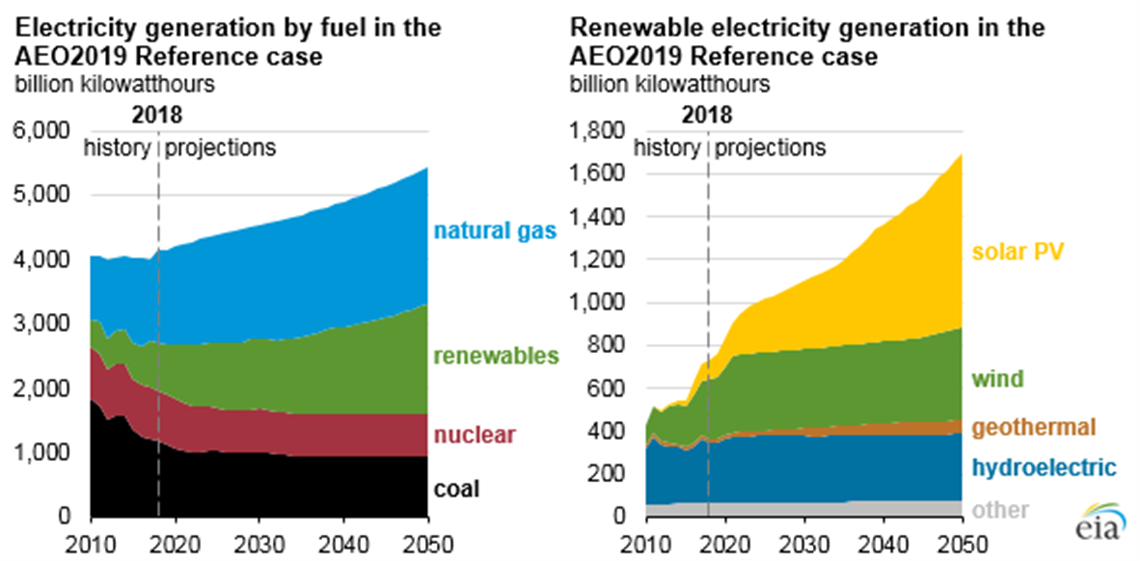EIA: Low Natural Gas Prices Will Drive Power Development In U.S.
24 January 2019

Natural gas will dominate new energy production in the U.S. over the next 30 years, according to the U.S. Energy Information Association (EIA)’s Annual Energy Outlook 2019, which provides modeled projections of domestic energy markets through 2050.
The report includes cases with different assumptions about macroeconomic growth, world oil prices and technological progress. But the report’s reference case—which outlines what is seen as most likely to happen—shows natural gas consumption for electric power also increases significantly in the power sector in response to low natural gas prices and to installing lower cost natural gas-fired combined-cycle generating units.
The report also asserts that the United States will become a net energy exporter in 2020 and will remain so throughout the projection period as a result of large increases in crude oil, natural gas, and natural gas plant liquids (NGPL) production coupled with slow growth in U.S. energy consumption.
Of the fossil fuels, natural gas and NGPLs have the highest production growth, and NGPLs account for almost one-third of cumulative U.S. liquids production during the projection period. Natural gas prices remain comparatively low based on historical prices during the projection period, leading to increased use of this fuel across end-use sectors and increased liquefied natural gas exports. Increasing energy efficiency across end-use sectors keeps U.S. energy consumption relatively flat, even as the U.S. economy continues to expand.
The continuing decline in natural gas prices and increasing penetration of renewable electricity generation have resulted in lower wholesale electricity prices, changes in utilization rates, and operating losses for a large number of baseload coal and nuclear generators.
Generation from both coal and nuclear is expected to decline in all cases. In the Reference case, from a 28% share in 2018, coal generation drops to 17% of total generation by 2050. Nuclear generation declines from a 19% share of total generation in 2018 to 12% by 2050. The share of natural gas generation rises from 34% in 2018 to 39% in 2050, and the share of renewable generation increases from 18% to 31%.
Assumptions of declining costs and improving performance make wind and solar increasingly competitive compared with other renewable resources in the Reference case. Most of the wind generation increase occurs in the near term, when new projects enter service ahead of the expiration of key federal production tax credits.
Solar Investment Tax Credits (ITC) phase down after 2024, but solar generation growth continues because the costs for solar continue to fall faster than for other sources.
STAY CONNECTED




Receive the information you need when you need it through our world-leading magazines, newsletters and daily briefings.
POWER SOURCING GUIDE
The trusted reference and buyer’s guide for 83 years
The original “desktop search engine,” guiding nearly 10,000 users in more than 90 countries it is the primary reference for specifications and details on all the components that go into engine systems.
Visit Now
CONNECT WITH THE TEAM









